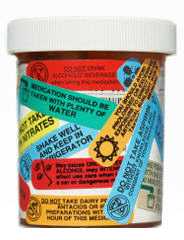Medication Safety Basics

About
CDC’s Medication Safety Program monitors adverse drug events (ADEs) across the country and uses this data to improve medication safety through better partnerships and policies.
Medication Safety is Important
Adverse drug events are harms resulting from the use of medication and include allergic reactions, side effects, overmedication, and medication errors. Adverse drug events are a serious public health problem. It is estimated that:
- 82 percent of American adults take at least one medication and 29 percent take five or more;1
- ADEs cause more than 1 million emergency department visits and 280,000 hospitalizations each year;2
- $3.5 billion is spent on excess medical costs of ADEs annually;3
- We may be able to prevent more than 40% of costs related to of ambulatory (non-hospital) ADEs.3
The numbers of adverse drug events is likely to grow due to:
Additional Program Information
- Adverse Drug Events in Children
- Adverse Drug Events in Adults
- Adverse Drug Events from select Medicines
- Campaigns & Initiatives
- Development of new medicines
- Discovery of new uses for older medicines
- Aging American population
- Increased use of medicines for disease treatment and prevention
- Expansion of insurance coverage for prescription medicines
Related Links
- Tips to Prevent Poisonings, CDC
- Treatments & Medications, Agency for Healthcare Research and Quality
- Information for Consumers (Drugs), Food and Drug Administration
- Buying & Using Medicine Safely, Food and Drug Administration
- National Action Plan for Adverse Drug Event Prevention, Department of Health and Human Services
- Drug Safety, National Institutes of Health
- Taking Medicines Safely, National Institutes of Health
- VA Center for Medication Safety (VA MedSAFE), Department of Veterans Affairs
References
- Slone Epidemiology Center at Boston University. Patterns of medication use in the United States, 2006.
- U.S. Department of Health and Human Services, Office of Disease Prevention and Health Promotion. National Action Plan for Adverse Drug Event Prevention. Washington, DC: 2014.
- Institute of Medicine. Committee on Identifying and Preventing Medication Errors. Preventing Medication Errors, Washington, DC: The National Academies Press 2006.
- Page last reviewed: September 28, 2010
- Page last updated: December 7, 2016
- Content source:



 ShareCompartir
ShareCompartir